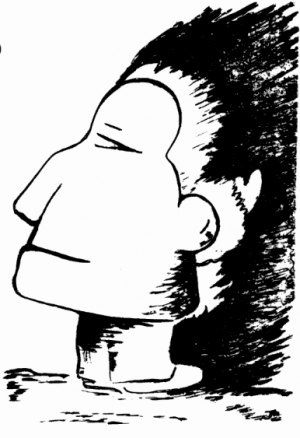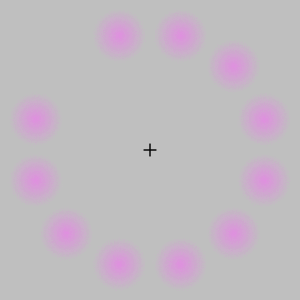Optical Illusions
Optical illusions are a great initiation point for people to start to explore Pivotal Mental States. Optical illusions provide the observer a quirk of perception which may seem strange at first however, they can often be explained from psychological or physiological reasons.
Psychological
Human vision feels as if we have two High Definition Cameras attached to our face and we are perceiving things through a 8k ultra HD screen. The problem with this is our Energy Frugal Brain, it would take to much energy to process such a large stream of information, so the brain makes some shortcuts both in a physical sense in our hardware and in the software side in our psychology.
Gestalt Switch
In psychology, a Gestalt Switch is when a person's perception suddenly changes from one visual interpretation to another. For instance, the initial interpretation of Figure 1 is usually a face, however, given time, people can also see an eskimo. The reason the majority of people initially see a face first is that this is a prioritised type of human perception. It has been found that there are inbuilt mechanisms in the brain which canalize ambiguous information into the face processing part of the brain. Another demonstration of this is the Coffer Ambiguous Figure which takes advantage of the brain prioritisation of horizontal lines over rounded lines.
Magic Trick
Gestalt Switches can be framed or primed so that the presenter can force others to seeing one version of the image opposed to another. For instance, if you take Figure 1 and present it to someone else with the framing: "here is a a picture of an eskimo entering a cave" you will be able to force their perception into primarily seeing the eskimo.
Physiological
Alongside the psychological limitations of our perception there are physiological limitations. These exist due to engineering limitations of organisms, for instance sometimes space is an issue, so your optic nerve concentrates its most high definition nerves where they are needed most. This leads to little perceived issues in the peripheral vision which can be demonstrated via the following illusions.
Grid Illusion or Scintillating Grid
The scintillating grid is a simultaneous lightness contrast illusion. Figure 2' shows a grid of dots which are not centred in your visual field appear to flash from black to white, in a scintillating' effect.
Mechanism
The mechanism proposed by Baumgartner (1960) detailed that the effect might be due to inhibitory processes in the retinal ganglion cells, the neurons that transmit signals from the eye to the brain. To each cell there corresponds a small region of the retina called the receptive field, where photoreceptive rods and cones can trigger an electrical response in that cell. The receptive fields of adjacent ganglion cells may overlap.
Troxler Effect
Firmly fixating one's focus on a stationary object in the visual field can cause the surrounding visuals to appear to fade or slowly vanish (Figure 3). To demonstrate this, keep very still and keep your gaze focused on the central cross. Do not strain your eyes, but try not to let your gaze wander from the centre. You will observe three different illusions:
- A green disc running around the circle of lilac discs in place of the gap.
- The green disc running around on the grey background, with the lilac discs having disappeared in sequence.
- A gap running around the circle of lilac discs.
Mechanism
The Troxler effect illustrates the importance of saccades, the involuntary movements of the eye which occur even while one’s gaze is apparently settled.


